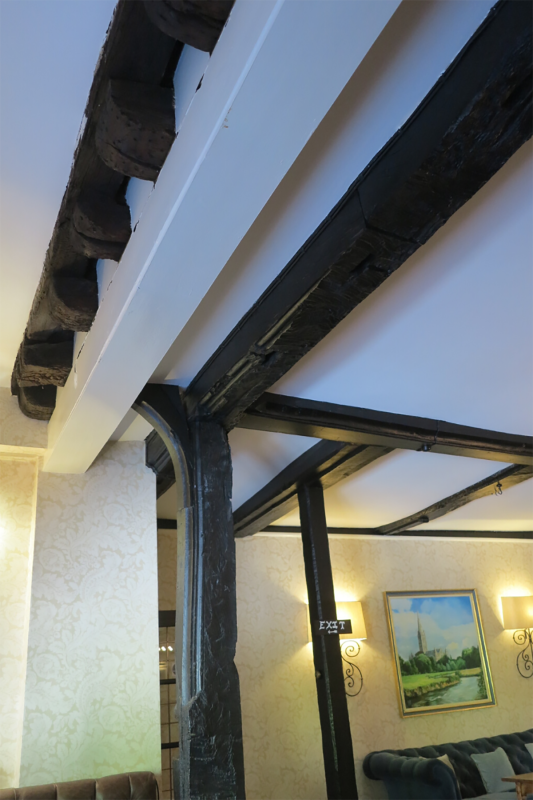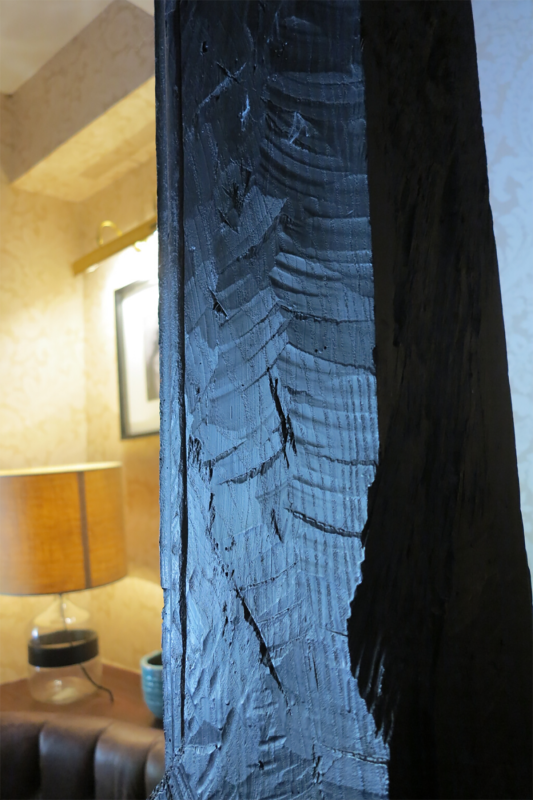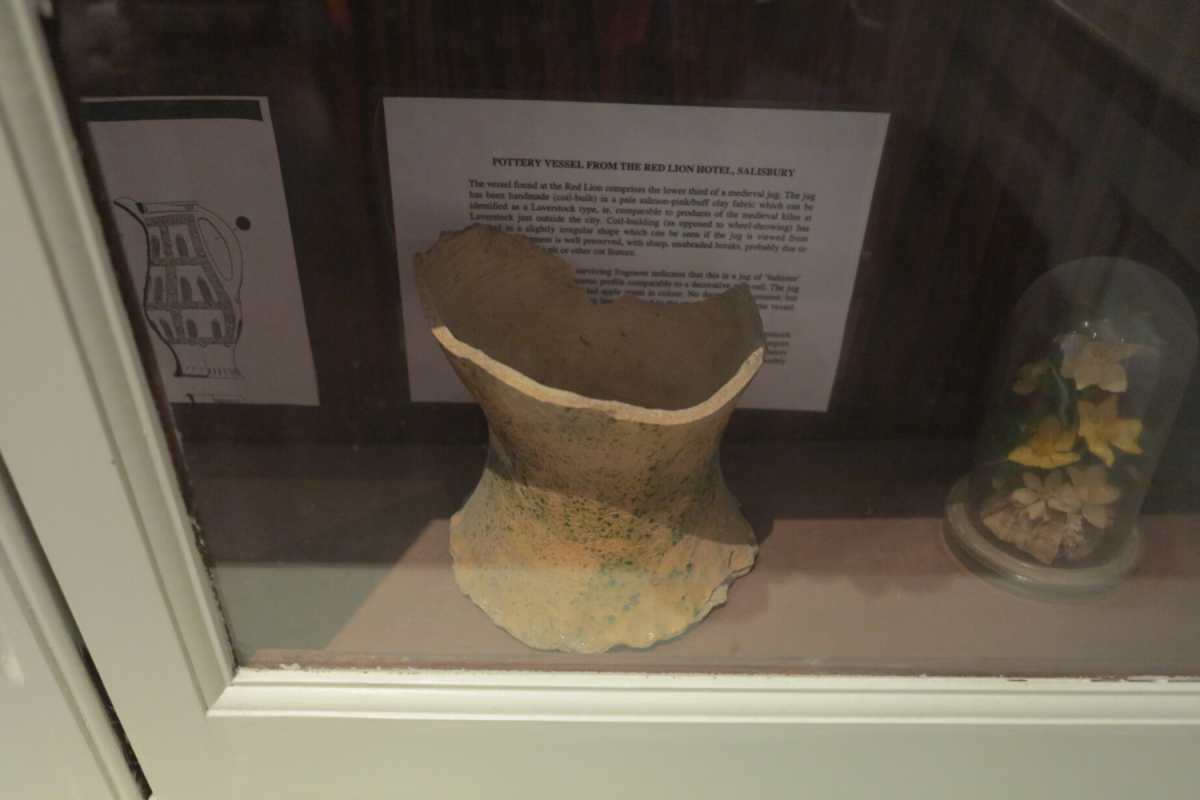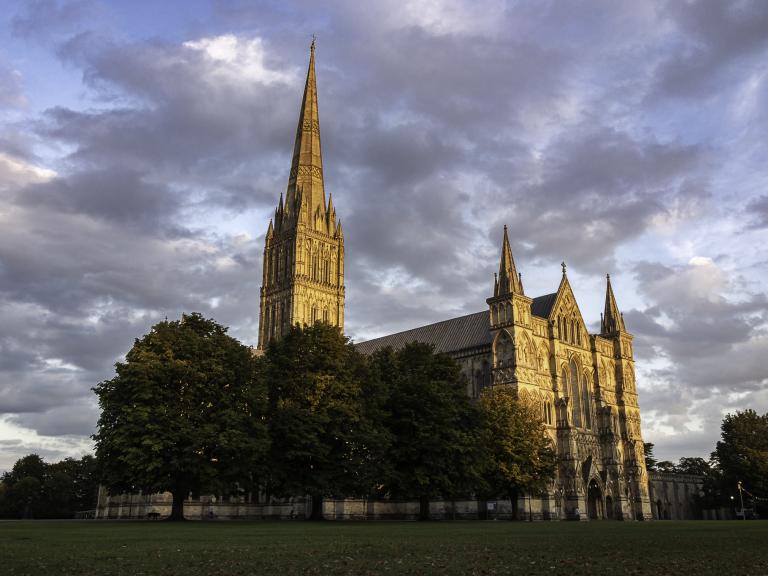Our journey now moves to the northern end of Antelope Chequer. This area was originally named White Bear Chequer after the hotel, now the Red Lion, by which the establishment was formerly known until it was renamed in the 17th century. Inns and hotels, offering accommodation for travellers, tourists and pilgrims who passed through the city, were and remain essential parts of Salisbury’s economy. Surprisingly, for a building of such prominence in the city, it does not feature in any detail on Naish’s survey of 1716. The building itself is one of the most distinctive in Salisbury, one that I know well, visiting on a regular basis with a group of, mainly elderly, gentlemen to drink coffee, socialise and put the world to rights. The core of the main range, which lies around a central courtyard, dates from the early 14th century. It is pleasing to sit in the 19th century bay-window to see traces of the original timber framing which are otherwise now hidden behind a 19th century façade. The moulded wall plate, jettied upper floor and traces of a former medieval window, all remain visible to show what the façade originally looked like but, equally visible are traces which show where this framing was crudely hewn through to accommodate the present window. Such treatment is totally unforgiveable, yet with the progress of time, it adds to the overall character of this ancient building.


The opportunity to contribute to the story of this irreplaceable part of Salisbury and those who have used it was welcome in 1999 when plans were submitted to extend the dining area. The project involved the excavation of two small machine-dug geotechnical test pits, approximately 2 m long and 1.20 m wide. They aimed to investigate the deposits immediately to the south of the building before the foundations were laid.
Test Pit 1 exposed part of a Greensand flagstone floor, possibly a yard surface, approximately 0.80 m below the present ground level. All other layers in both test pits contained medieval and post-medieval material, which had been successively brought in, to level-up the land at the back of the hotel. Building debris, containing broken roof tile, was especially common at the base of each test pit. Reused demolition rubble material, of this sort, still forms a vital part of site preparation on many construction projects before building can begin and was especially useful in Salisbury to consolidate the boggy floodplain. No foundations or archaeological features were noted, although a probable backfilled rubbish pit was found during the subsequent construction work.
Finds were relatively rare but included animal bone and oyster shell with fragments of medieval roof tile and post-medieval clay pipe with pottery sherds from the Verwood kilns, approximately 20km away in neighbouring Dorset, where production increased from the 16th century. Undoubtedly the most interesting find comprised the base of a medieval ‘baluster’ jug, a tall elegant vessel and so-called because the curved profile is reminiscent of a staircase baluster, which was found later in the pit. The jug, which was handmade using a series of superimposed coils, was produced at the medieval pottery kilns at Laverstoke. The exterior surface was covered by a thin, mottled apple green glaze. These jugs served to carry liquids, especially ale, averaging perhaps 4 pints, and were manufactured from the mid-13th century. The Red Lion vessel is likely to date to the 14th or 15th century, which fits nicely with the structural history of the building.

This object was totally appropriate given the nature of the establishment. Sadly, ale is no longer routinely dispensed in jugs, although they still form an important component of service at the hotel; now much smaller, they dispense only milk for tea and coffee. The fragment of baluster jug found during the building work can still be seen in a small display case which stands in the hotel bar (seen above).
